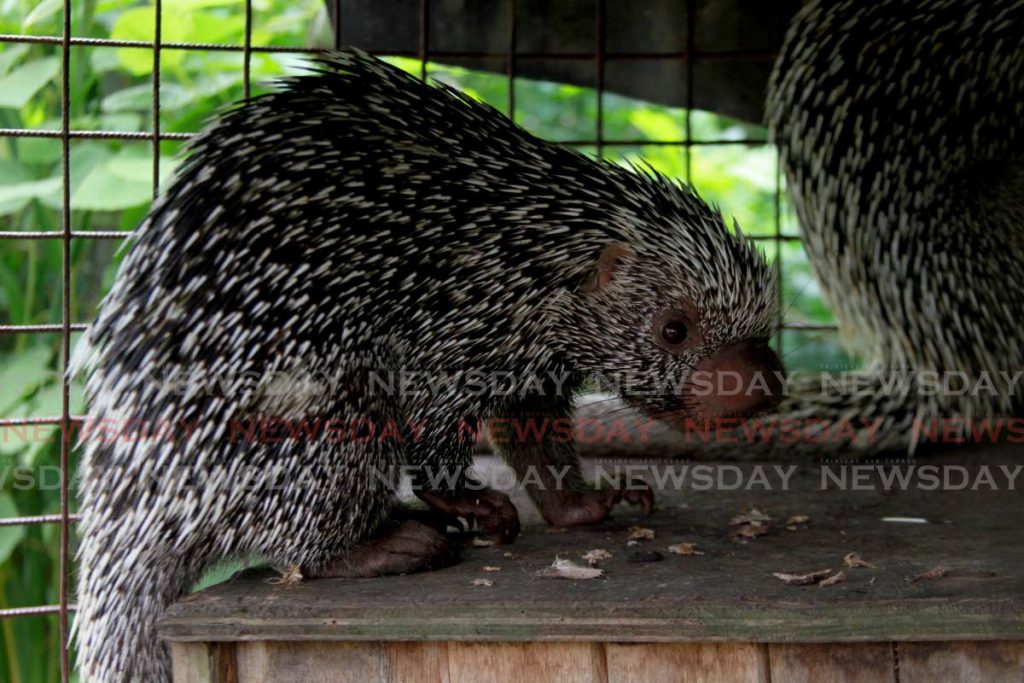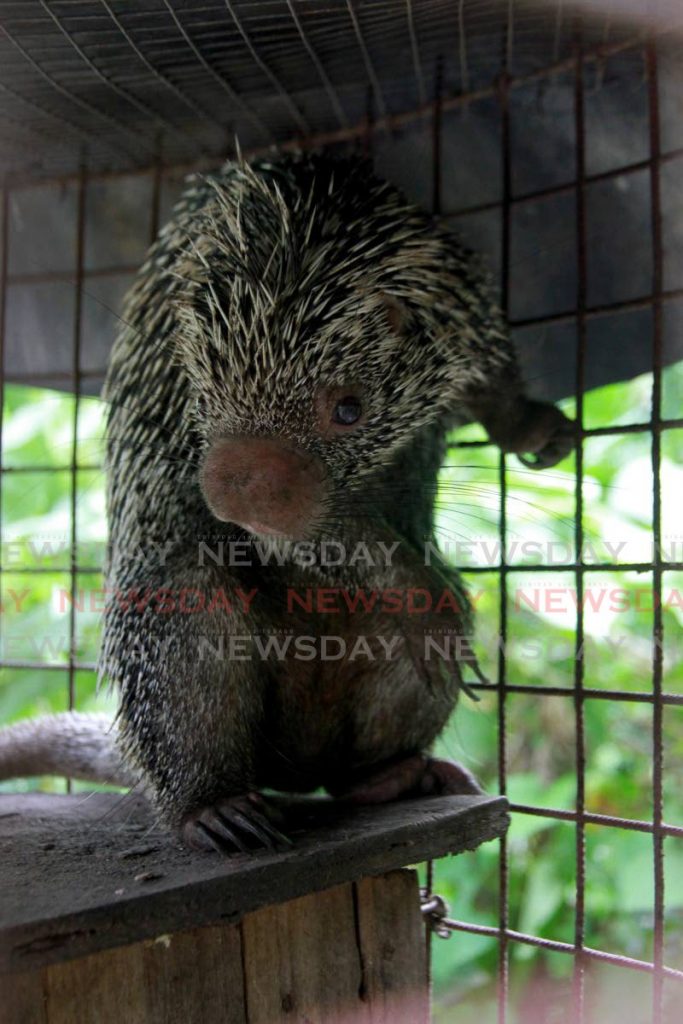A prickly life: Brazilian porcupine makes its home in Trinidad

Did you know that the tail of a Brazilian porcupine (
Coendou prehensilis) is similar to that of a human hand?
“The Brazilian porcupine is unique in that it’s the only porcupine in the world that has a prehensile tail," conservationist Ricardo Meade explained to Newsday Kids.
“Its tail is as long as its body and can be used as fifth limb, the same way monkeys use their tail.
“The tail is similar to the palm of a human hand as it can be used for grabbing and holding onto things.”
Given that the porcupines spend most of their time in trees, the prehensile tail is important as it helps with their grip and prevents them from falling out of trees. Apart from their tails, their feet and forelimbs help them climbing trees.
Trinidad is the only island in the Caribbean where Brazilian porcupines are found in the wild.
When looking at the porcupines, you may notice hundreds of black and white spikes which are scientifically called quills.
“Their quills are actually adapted hairs that are hollow and have sharp tips. The porcupine uses these quills in situations of self-defence,” said Meade

The co-founder of El Socorro Centre for Wildlife Conservation in Freeport, Meade was once poked by a quill and recalled that it felt like being poked with a needle. He said the most painful part of the experience was removing the quill which got stuck in the skin.
Since porcupines are covered in quills, you may think it’s painful for the females to give birth.
But that’s not quite the case.
Meade explained, “Young porcupines are actually born with soft reddish fur.
“As they age, that fur will fall out and will be quickly replaced by the quills.”
Given these porcupines are nocturnal (active at night) and solitary in nature, it makes them elusive.
But their strong musky odour may help give away their presence.
“Since they are solitary animals, they have a strong odour which is part of their communication.
“They use their strong musky odour and strong sense of smell to find each other.”
During the day, porcupines can be found sleeping in tree cavities and branches.

In the night, you can find them foraging for food like fruits and leaves.
Apart from humans, porcupines don’t have any natural predators.
“The only threat these porcupines face is humans as they are hunted for their meat.
“But this is illegal because porcupines are not on the game list (animals that are allowed to be hunted).”
Deforestation also poses a threat to porcupines as it not only disrupts their food sources, but it also leads to the destruction of their habitat.
Created in 2005, the El Socorro centre does conservation programmes and rehabilitates animals rescued from distressing situations.
Meade and the team have since helped rescue several porcupines.
“At the centre, we’ve dealt with 14 porcupines over the past 16 years.
“They usually get into people’s houses and trees…they are sometimes even chased up trees by dogs.
“We usually come to people’s homes and remove them to put them back into the wild.”
If a porcupine ever wanders into your yard, the first thing you should do is secure your dog if you have one because dogs are known to attack porcupines.
After securing your dog, call the wildlife centre to come and remove the porcupine.


Comments
"A prickly life: Brazilian porcupine makes its home in Trinidad"